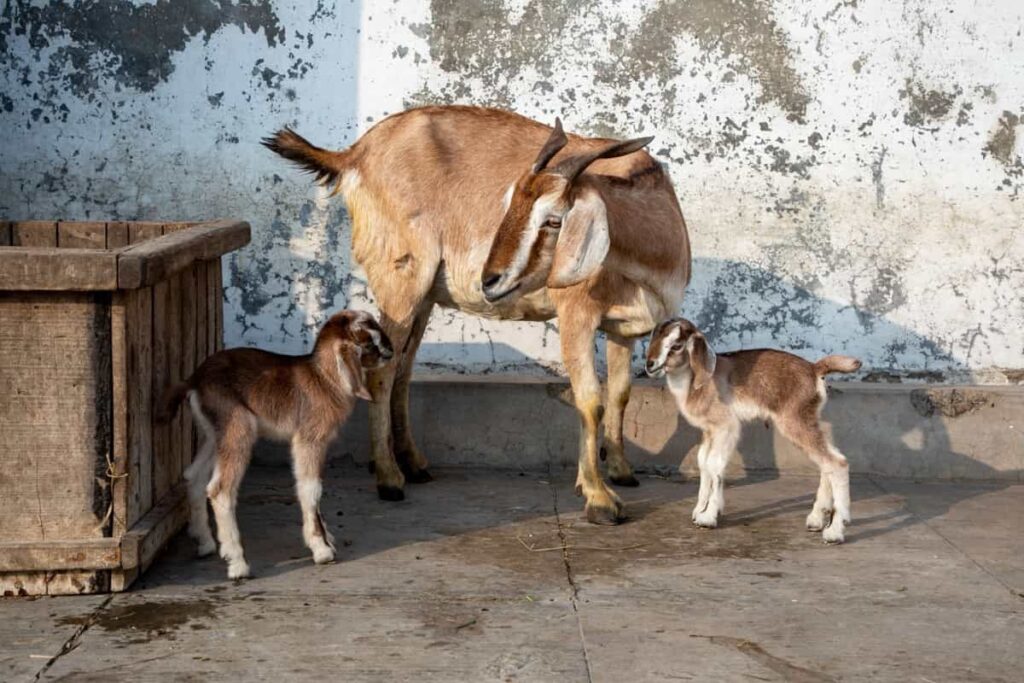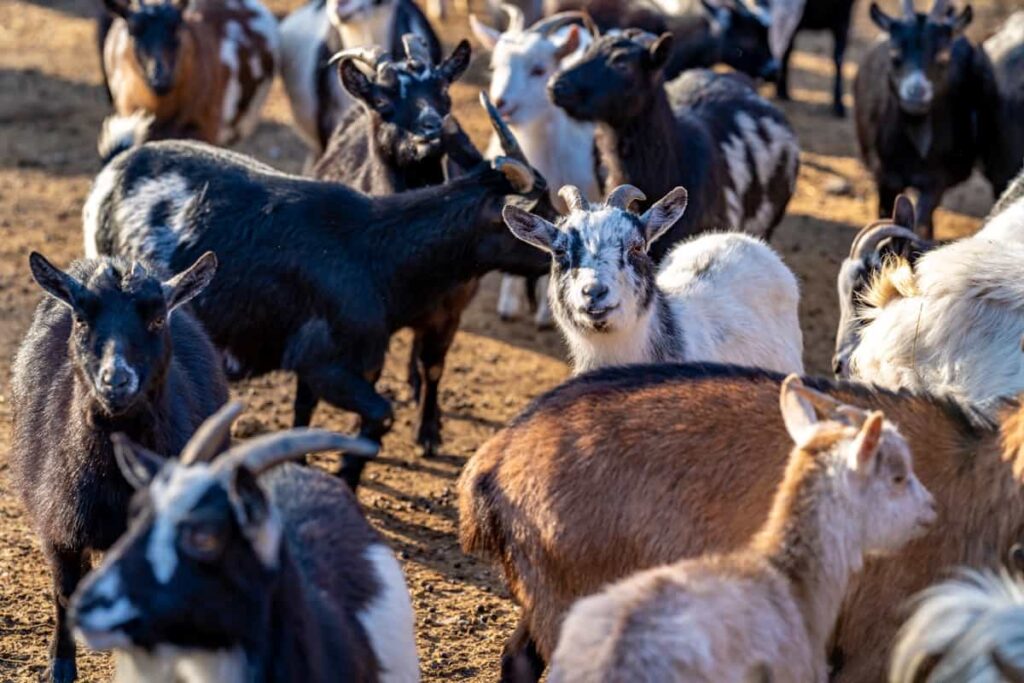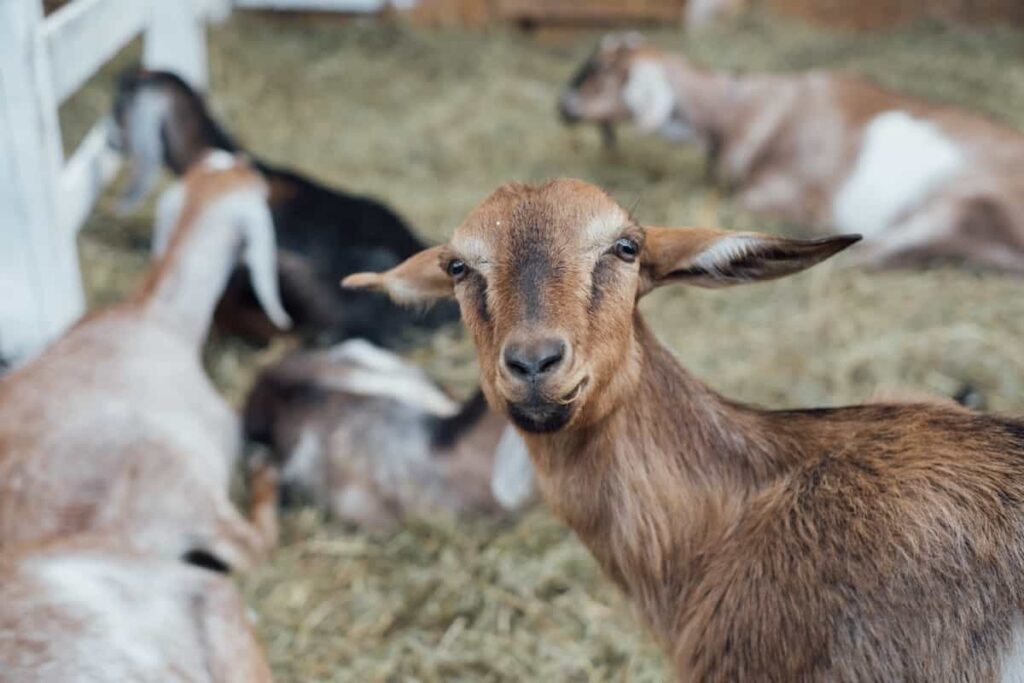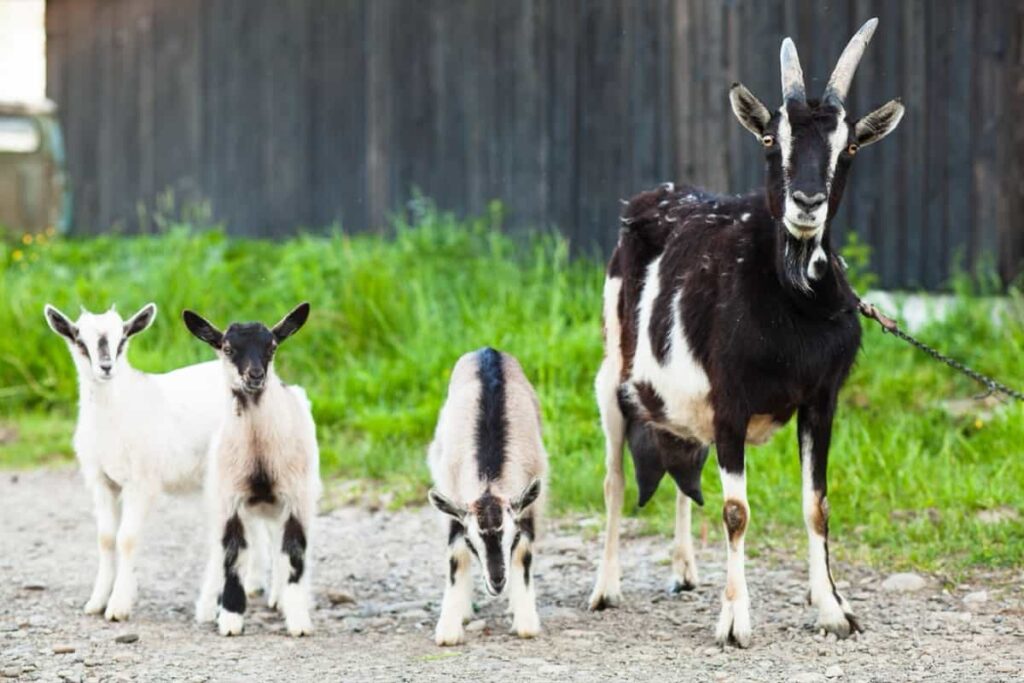Artificial insemination in goat breeding is a reproductive technique that involves collecting semen from a male goat, also known as a buck, and manually depositing it into the reproductive tract of the doe (a female goat). By bypassing natural mating, this method allows breeders to carefully select the genetic traits they want to pass on to future generations. Breeders can strategically plan when they are inseminated, increasing the chances of successful fertilization and maximizing productivity within their herds.

Artificial Insemination in Goat Breeding
History and Development of Artificial Insemination in Goat Breeding
Artificial insemination (AI) has a rich history in the field of animal breeding, and its development in goat breeding is no exception. In goats specifically, AI started gaining popularity during the mid-1900s when farmers recognized its potential benefits. Initially, fresh semen was predominantly used for insemination purposes.
However, with advancements in cryopreservation techniques, frozen semen became more widely available and revolutionized the practice. Today, AI plays a crucial role in goat breeding programs worldwide. It allows breeders access to high-quality genetics from superior bucks without having to transport animals over long distances physically. This not only increases genetic diversity but also enhances overall herd productivity and performance.
Techniques and Procedures of Artificial Insemination in Goats
Artificial insemination in goats involves a series of techniques and procedures that are carefully executed to ensure successful breeding. The first step is the collection of semen from a buck, which can be done using an electroejaculation technique. Then, the collected semen is evaluated for quality, including factors such as sperm motility and concentration.
Once the semen has been collected and assessed, it is time for insemination. Insemination can be performed through different methods, including transcervical or intrauterine insemination. Transcervical insemination is passing a catheter through the cervix into the uterus to deposit the semen directly. On the other hand, intrauterine insemination requires surgical intervention to place the semen directly into the uterine horns. Timing plays a crucial role in artificial insemination procedures.
It is important to determine when ovulation occurs to perform insemination at precisely the right moment. This can be achieved by monitoring hormone levels and observing behavioral signs of estrus in female goats. Proper hygiene practices are also essential during artificial insemination procedures to minimize contamination and reduce potential risks of infection. Sterile equipment should be used throughout each step, ensuring that all instruments are cleaned and disinfected properly before use.
In case you missed it: How to Optimize Reproduction and Breeding Programs in Goat Farms

Advantages of Artificial Insemination in Goat Breeding
Improved Genetics: The main advantage of artificial insemination in goat breeding is the ability to access superior genetics for breeding purposes. With AI, breeders can choose semen from high-quality bucks with desirable traits such as milk production, meat quality, or disease resistance. This allows them to improve their herd’s genetic potential and produce offspring with desired characteristics.
Increased Efficiency: AI offers a more efficient method of breeding goats than natural mating. It eliminates the need for owning and maintaining a buck on-site, reducing costs associated with feeding and housing a male goat throughout the year. Additionally, using AI enables breeders to inseminate multiple does with a single collection of semen, maximizing productivity.
Reduced Disease Transmission: Natural mating carries the risk of transmitting diseases through physical contact between animals. By using AI, breeders can minimize this risk as there is no direct contact between bucks and does during breeding.
Disadvantages and Challenges of Artificial Insemination in Goat Breeding
The major challenge is the need for trained personnel to perform the procedure accurately. This can be a main investment for small-scale goat farmers who may not have access to these resources. Another disadvantage of AI in goat breeding is the potential decrease in genetic diversity within a breed.
By relying heavily on a few select bucks with superior genetics, there is a risk of narrowing the gene pool and increasing the prevalence of certain genetic disorders or weaknesses. Additionally, AI requires precise timing as it only comes into heat every 18-21 days. Failure to inseminate at the right time can result in missed opportunities for successful conception. This necessitates close monitoring of the doe’s estrus cycle, which can be time-consuming and labor-intensive.
Comparison of Artificial Insemination with Other Reproductive Techniques in Goats
One commonly used technique is natural mating, where a buck and doe are allowed to mate naturally. This technique has its advantages, as it allows for direct contact between the animals and ensures genetic diversity. However, there are also drawbacks, such as the risk of injury or disease transmission during mating. Another option is embryo transfer, which involves collecting embryos from high-quality does and implanting them into surrogate does.
In case you missed it: Goat Breeding and Genetics for Improved Productivity and Disease Resistance

This technique allows for the rapid multiplication of superior genetics but requires specialized equipment and expertise. Compared to these methods, AI offers several benefits. It allows breeders access to superior genetics from bucks located far away without having to transport them physically. AI reduces the risk of spreading diseases through direct contact between animals during mating.
Impact of Artificial Insemination on Goat Breed Conservation
By implementing AI techniques, breeders can carefully select and preserve the genetic characteristics of these unique goat breeds. It allows them to maintain a purebred population without resorting to extensive natural mating methods that may increase the risk of introducing unwanted genes. Moreover, AI enables breeders to overcome geographical barriers when it comes to accessing quality breeding stock.
They can import frozen semen from elite bucks located in different regions or even countries. In addition, by using AI for breed conservation purposes, farmers can strategically manage their herds’ reproductive cycles. This ensures controlled breeding practices that maximize the number of offspring from superior individuals while minimizing any negative effects on overall herd health.
Regulatory Aspects of Artificial Insemination in Goat Breeding
These regulations vary from country to country and even within different regions. The important aspect is the licensing and certification required for individuals or organizations involved in performing AI procedures. This ensures that only qualified professionals with proper training and expertise are allowed to carry out these procedures.
In addition, there may be specific guidelines regarding the collection, storage, and transportation of semen samples. Proper protocols must be followed to maintain the viability and quality of the semen during these processes. Regulations may also address issues related to genetic diversity and breed conservation.
Some countries have strict rules on using AI techniques for preserving endangered or rare breeds, aiming to maintain their unique characteristics while preventing excessive crossbreeding. It’s essential for breeders and farmers engaged in goat breeding through AI to familiarize themselves with these regulations, as non-compliance can result in legal consequences.
Frequently Asked Questions (FAQ) on Artificial Insemination in Goat Breeding
Can All Goats Undergo Artificial Insemination?
In theory, most goats can undergo AI; however, certain factors, like age and health, can affect their success rate. Goats should ideally be healthy with proper body condition scores before undergoing artificial insemination.
In case you missed it: Boer Goat Breed Information: Breeding, Raising, Characteristics, and Care

Is AI More Effective Than Natural Mating in Goats?
The effectiveness of AI depends on various factors, including timing, semen quality, and expertise of the breeder performing the procedure. When done correctly by trained professionals following best practices, AI has been proven to yield results comparable to natural mating.
Can Beginners Perform Artificial Insemination in Goats?
Although it requires skill and knowledge, novice breeders can learn how to perform AI under expert guidance through workshops or training programs specifically designed for this purpose.
Conclusion
Artificial insemination plays an important role in goat breeding by facilitating controlled reproduction and access to superior genetics across long distances while reducing disease transmission risks associated with traditional mating methods. This reproductive technique offers a multitude of benefits that can enhance the effectiveness of breeding programs.
- Types of Grass Growing for Goat Farm
- How to Train Goats for Milking: A Beginners Guide
- Goat Milking Practices and Equipment: A Beginner’s Guide
- Goat Farming for Fiber: Producing Mohair and Cashmere
- Maximizing Goat Milk Production: Tips for Dairy Goat Farmers
- Goat Farming as a Family Business: Strategies for Success
- Profitable Kenya Goat Breeds for Commercial Dairy and Meat Business
- Unlock the Secrets of Oberhasli Goat: Discover Raising and Management Practices
- Ultimate Guide to Myotonic Goats: Explore Profile to Raising